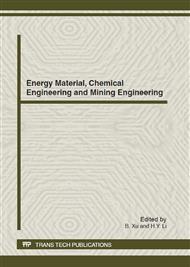p.93
p.97
p.101
p.105
p.109
p.115
p.119
p.127
p.132
Effect of Antimony on the Corrosion Resistance of Steel in Acid Solution with High Chloride Concentration
Abstract:
This study focused on the effect of antimony on the corrosion resistance of low alloy steel using electrochemical techniques such as dynamic scanning and EIS and immersion test in an acid solution with high chloride concentration. The potentiodynamic test showed the anodic and cathodic corrosion behavior of all specimens and the corrosion rate decreased with increasing antimony addition. EIS showed that the antimony-containing steels had higher rust layer resistance. These test results showed the addition of antimony was convenient to the enhancement of corrosion resistance of the steel in the acid solution with high chloride concentration. The tests proved that the content of antimony controlled to 0.12% in the steel showed the best corrosion resistance.
Info:
Periodical:
Pages:
109-114
Citation:
Online since:
October 2012
Authors:
Keywords:
Price:
Сopyright:
© 2012 Trans Tech Publications Ltd. All Rights Reserved
Share:
Citation:


